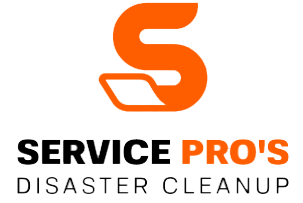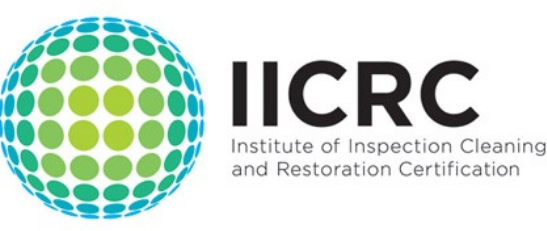Did you know that mold can start to grow within just 24 hours of a water leak in your home?
We’re here to help you understand the top signs that you might need professional mold remediation.
This is not just about those unsightly black spots on your shower tiles – mold can cause serious health issues and even structural damage to your property.
Stay with us to find out what these warning signs are, and more importantly, how to act on them.
Identifying Serious Mold Infestations
Spotting serious mold infestations in your home isn’t always a straightforward task, but there are telling signs to watch out for. For starters, we’ve got to trust our noses. A musty, mildew-like smell is often the first giveaway. It’s not something we can ignore, as it hints at hidden mold growth.
Visible mold growth is another clear sign we shouldn’t overlook. While mold comes in various colors and sizes, it’s typically fuzzy or slimy. We often find it in damp areas, like bathrooms, basements, or around leaks. Small patches mightn’t seem concerning, but they can quickly spread if we don’t act fast.
Health symptoms are another major indicator. We might experience persistent allergies, like sneezing, coughing, or watery eyes. In severe cases, we could face more serious health issues such as respiratory problems or skin infections. If we notice these symptoms only when we’re home, it’s likely mold is the culprit.
Lastly, let’s not forget the importance of moisture. Mold thrives in damp conditions. So, if we’ve had issues with water damage, leaks, or high humidity, we’re at a higher risk of mold infestation. Wet spots, stains, or discoloration on walls and ceilings are significant signs of moisture problems, and possibly mold.
Health Impacts of Mold Exposure
Exposure to mold can gravely impact our health, leading to a range of illnesses from allergy-like symptoms to severe respiratory conditions. It’s not something to ignore or put off dealing with, as the longer we’re exposed to mold, the worse the health consequences can be.
The most common reactions to mold are similar to allergies and can include sneezing, itching, red eyes, and skin rash. We might mistake these symptoms for a cold or hay fever, but if they persist, it could be a sign of mold exposure. But it doesn’t stop there. Some of us may experience more severe reactions, such as difficulty breathing or shortness of breath. If you’re asthmatic, exposure to mold can trigger an attack.
Mold also poses a substantial risk to our immune system. Long-term exposure can lead to more serious health problems like chronic sinus infections, bronchitis, and even pneumonia. It can also cause hypersensitivity pneumonitis, a rare but serious condition that resembles bacterial pneumonia.
In extreme cases, exposure to certain types of toxic mold can lead to neurological problems. Symptoms can include headaches, memory loss, confusion, and in some cases, long-term brain damage.
The bottom line is that mold isn’t just an unsightly nuisance. It’s a serious health risk that we need to address promptly. If you’re experiencing any of these symptoms and suspect mold could be the cause, it’s crucial to seek professional help for mold remediation immediately. Your health may depend on it.
Structural Damage From Mold Growth
While our health is a significant concern, we can’t overlook the potential for mold to cause serious damage to our homes and buildings. Mold is more than a cosmetic issue; it’s a structural one too. Once it takes hold, it can cause extensive damage, often hidden until it’s too late.
Mold thrives in damp environments, where it feeds on organic materials such as wood and drywall. Over time, it can weaken these materials, compromising the structural integrity of a building. If left unchecked, this could lead to costly repairs or, in extreme cases, total building collapse.
We mustn’t underestimate the destructive power of mold. From discoloration to rot, the signs of mold damage can be subtle at first. You might notice a musty smell or see visible mold growth. But often, the most severe damage lurks beneath the surface, behind walls, or in hard-to-reach areas of the building.
We can’t afford to ignore these signs. It’s not just about aesthetics; it’s about the safety and stability of our homes. And the longer we wait, the worse the damage can become. Mold doesn’t just grow; it spreads. And as it spreads, it weakens the structure it inhabits.
It’s clear that we need professional help to tackle this issue. Mold remediation experts can assess the extent of the damage, clean up the mold, and repair any structural damage. They can also provide guidance on preventing future mold growth. It’s a proactive step to protect our homes and our health.
Professional Mold Remediation Process
To effectively combat this serious issue, we must understand the professional mold remediation process. It’s a meticulous, multi-step process that aims not only to remove visible mold but also to prevent its recurrence.
The process begins with a thorough inspection of the property to identify the extent and location of the mold infestation. We use advanced tools and techniques to detect hidden mold and moisture, which can be a breeding ground for mold spores.
After the inspection, we seal off the contaminated area to prevent the spread of mold spores to other parts of the property during the remediation process. This is crucial in ensuring the mold issue doesn’t become a larger problem.
The next step involves removing the mold. We use specialized equipment and cleaning agents to effectively and safely remove the mold. Any porous materials like drywall or carpeting that are heavily infested may need to be discarded.
Following mold removal, we clean and sanitize the affected areas, including furniture and personal belongings. This step is important in eliminating any remaining mold spores.
Finally, we focus on moisture management to prevent future mold growth. This typically involves repairing leaks, improving ventilation, and possibly using dehumidifiers.
Post-remediation, we conduct a final inspection to ensure complete mold removal. If any mold is still detected, the process is repeated until the property is mold-free.
Understanding the professional mold remediation process helps us appreciate the expertise and efforts involved in effectively and safely handling a mold issue. Remember, it’s not a DIY project. It requires professional knowledge and experience to ensure a healthy, mold-free environment.
Frequently Asked Questions
What Are the Costs Associated With Professional Mold Remediation?
We’re often asked about mold remediation costs. They can vary greatly, depending on the severity and location of the mold. It’s not unusual for professional services to range from a few hundred to several thousand dollars.
How Often Should You Check Your Home for Mold Growth?
We’d recommend checking your home for mold growth at least once a year. However, if you’ve had recent water damage or notice a musty smell, it’s best to check immediately to prevent serious problems.
What Are the Precautions to Prevent Mold Growth?
We’re often asked about mold prevention. It’s crucial to keep areas dry, use dehumidifiers, and ensure good ventilation. Regularly check for water leaks and fix them immediately. It’s better to prevent than to remediate.
Can Mold Infestations Reoccur After Professional Remediation?
Yes, mold infestations can reoccur even after professional remediation. We’re not immune to it. It’s crucial we maintain a dry, well-ventilated environment to prevent mold regrowth. Regular inspections also help in early detection.
What Are the Insurance Considerations When Dealing With Mold Remediation?
We’re often asked about insurance considerations during mold remediation. It’s crucial to check your policy’s coverage for mold damage. We’ve found many policies don’t cover it, but it’s worth checking with your insurer.

